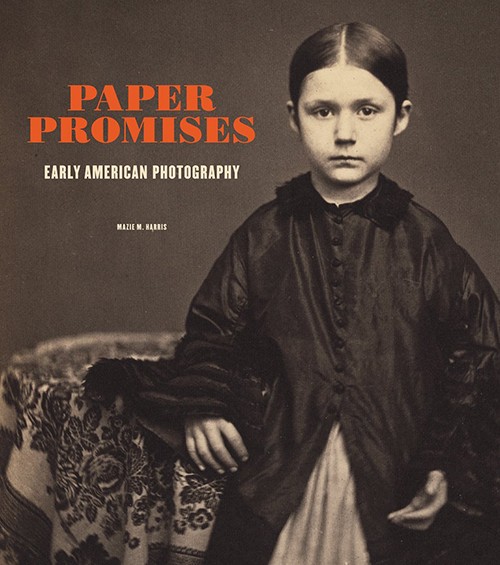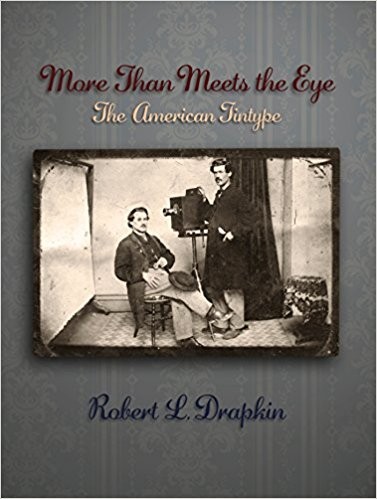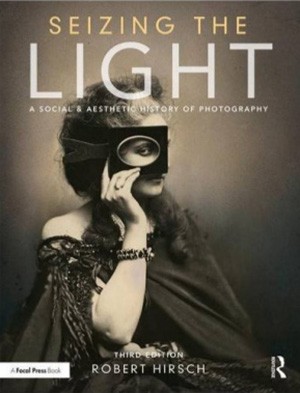On Exhibit: Shape of Light--100 years of Photography and Abstract Art at London's Tate Modern: Now-October 14, 2018
Forum Auctions Launches Its First Photo and Photobook Auction in London on Friday, June 1st.
Bonhams Auction House May Be up for Sale Again
James Ganz to Join the Getty as Senior Curator of Photographs
Photo Books: From Paper Promises to Tintypes to a Land of Epic Battles

PAPER PROMISES: EARLY AMERICAN PHOTOGRAPHY.
By Mazie M. Harris. Catalogue of the exhibition of the same name at the J. Paul Getty Museum, Los Angeles. Hardbound; 224 pgs.; 122 full-color plates. Information: http://www.getty.edu/publications.
As noted in the foreword to this fine catalogue, there has been scant research on "initial American attempts to to popularize techniques for producing paper photographs from negatives, partly because the extant images are rare and seldom seen." This volume and exhibition, to the credit of Getty assistant curator Mazie Harris, who conceived and realized it, should go a long way toward remedying that; the Getty is proudly promoting it as the first museum show dedicated to the display and study of early American photography on paper.
The Getty's photography holdings lend a considerable amount to the show, along with some two dozen other institutions and collectors. The result is a rich and coherent retrospective, which begins with the early experimentation of mostly anonymous 19th-century photographic strivers. Some excellent examples of salted paper printing help reveal the fascination with the beginning of the cross-country railroad, the architecture of cities (Philadelphia, Boston, Washington DC in their pre-modern bursts of development), and formal studio portraiture from the likes of Matthew Brady, the Langenheim and the Meade Brothers. All of these images reflect the business of photography as it began its ascent.
Some of these images feature applied media, which give a waxen coloration to the sitters that may not flatter the subject or the potential of the medium, but which prove the ambitions behind them -- to achieve the life-like. As Harris points out in one of her catalogue essays, such photographic entrepreneurs as John Adams Whipple, with his "Crystalotype" process, sought to popularize paper photography by advertising how they could be made from life or copied from Daguerreotypes, and colored to equal "the finest oil paintings in tone and finish."
But, ironically, all this worked against the success of paper photography, coinciding as it did with a surfeit of counterfeit currency. "Depleted confidence in paper representations helps to explain Americans' allegiance to the daguerreotype process," writes Harris, "which evoked the materiality of metal specie rather than insubstantial, and increasingly disreputable, paper."
Such scholarship is revelatory in painting a psychological portrait of the early American market for paper photography, and the catalogue also features incisive essays by Christine Hult-Lewis, who describes how paper photography played a significant role in the development of the West (easily replicated paper photos were helpful to lawyers in Western land-dispute cases), and by Matthew Fox-Amato, whose essay on "Plantation Tourism" explores one of American photography's all but forgotten corners: scenes, often produced as stereoscopic views, of plantation exteriors and interiors, and their appeal to those with any interest in slave life. As noted by Fox-Amato, about 10 distinct "plantation scenes," by local Charleston, SC, artists James M. Osborne and Frederick E Durbec, survive, along with anonymous images.
And as American culture moved, inexorable, toward the Civil War and the gold-fueled Westward expansion, the negative-positive techniques that defined paper photography proved their journalistic and promotional merit as personal mementos and propaganda. Technological advancement helped as well: where salted paper images were embedded in the paper, albumen prints suspended in an emulsion atop the paper's surface resulted in a glossy, more durable sheen, and became a mass medium. Photography had found its way into the American way of life, and the Getty's carefully crafted scholarship points us, fascinatingly, toward its seminal moments.

MORE THAN MEETS THE EYE: THE AMERICAN TINTYPE.
By Robert L. Drapkin. Prominent Books. Hardbound; 404 pgs.; approximately 400 full-color plates. ISBN 10: 1-942389-14-0; ISBN 13: 978-1-942389-14-9.
This self-published volume is a natural complement to the Getty catalogue. It illustrates how popular photography arguably begins with the advent of tintypes and ambrotypes, which had all but replaced the more expensive and more difficult daguerreotype by 1860. Using Frederick Scott Archer's collodion process to create a wet plate photo, the cheaper images were inferior to daguerreotypes, but their popular appeal was strong. Tintypes especially--which resulted from a direct positive image on a thin sheet of "japanned" iron (no tin involved, ironically)--proved more durable, and now collector Robert l. Drapkin has delivered this volume of beautifully reproduced tintypes that span their heyday.
Drapkin does a good, unpretentious job of describing the history and practical details of the tintype, with some remarkable examples of nude and novelty images, and some poignant examples of the pre- and post-mortem photography that flourished in the American Gothic heyday of the 1850s and especially the Civil War era, including tintypes of fugitive slaves, American Indians, soldiers in the Spanish-American war, famous Wild Westerners (Bat Masterson, Annie Oakley), and even John Wilkes Booth.
If anything, the tintype's inexpensive ubiquity captured the nascent informality of American life, and so Drapkin's collection contains lively portraits of everyday men, women, boys and girls pursuing simple pleasures–eating newly invented ice cream cones in 1903 New York or donuts; of pizza-makers (and their pizzas) as early as 1905; of mothers bottle-feeding their babies; and every manner of Victorian-era fashion. Images of drunkenness, cigarette smoking, brass bands, even Butch Cassidy and the Sundance Kid sharing a handful of peanuts comprise Drapkin's anthropological tintype parade. It's a fun, fitting testament to photography's humanistic force.

BRIEFLY NOTED: Justyna Badach's "Land of Epic Battles" is the latest (195) in the "Contact Sheet" series published by LightWork in Syracuse, NY (Information: 1-214-443-1300; http://www.lightwork.org), and it accompanies a recent LightWork exhibition at the Kathleen O. Ellis Gallery.
In this riveting series, multimedia artist Badach creates large, hand-made casein dichromate prints using film stills from ISIS training videos, adapting a 19th-century process that allowed her to use gunpowder as a pigment.
The unpredictable reaction of the gun powder with the casein on the paper yields a grainy texture and a sense of abstraction to these images of destroyed Middle Eastern shrines, bleak landscapes, and of missiles zooming to destroy other sites. In these conceptual works, the language of terrorism is spoken in an incendiary visual tongue, ancient and contemporary all at once.

"SEIZING THE LIGHT – A SOCIAL AND AESTHETIC HISTORY OF PHOTOGRAPHY," by Robert Hirsch, is now in its third edition (published by Routledge/Taylor & Francis Group; information: http://www.routledge.com), and it's a vital volume that continues to expand with the medium it chronicles so cogently. Photographer, curator and historian Hirsch (now director of Light Research in Buffalo, NY) has added up-to-date information and insight about contemporary photographers such as Cindy Sherman and Yang Yongliang, as well as detailed coverage of the digital age revolution in photography: mobile-phone photo art, citizen journalists and the high-impact role of social media.
"Seizing the Light" continues to be a great way into the multi-faceted world of photography, and its annotations point the reader to a great deal of additional research. Hirsch's erudition and passion for the medium is reflected in his grasp of important touchstones and his openness to its innovations and radical potentials. Well-illustrated and a pleasure to read.
Matt Damsker is an author and critic, who has written about photography and the arts for the Los Angeles Times, Hartford Courant, Philadelphia Bulletin, Rolling Stone magazine and other publications. His book, "Rock Voices", was published in 1981 by St. Martin's Press. His essay in the book, "Marcus Doyle: Night Vision" was published in the fall of 2005. He currently reviews books for U.S.A. Today.
(Book publishers, authors and photography galleries/dealers may send review copies to us at: I Photo Central, 258 Inverness Circle, Chalfont, PA 18914. We do not guarantee that we will review all books or catalogues that we receive. Books must be aimed at photography collecting, not how-to books for photographers.)
On Exhibit: Shape of Light--100 years of Photography and Abstract Art at London's Tate Modern: Now-October 14, 2018
Forum Auctions Launches Its First Photo and Photobook Auction in London on Friday, June 1st.
Bonhams Auction House May Be up for Sale Again
James Ganz to Join the Getty as Senior Curator of Photographs
Photo Books: From Paper Promises to Tintypes to a Land of Epic Battles


Share This